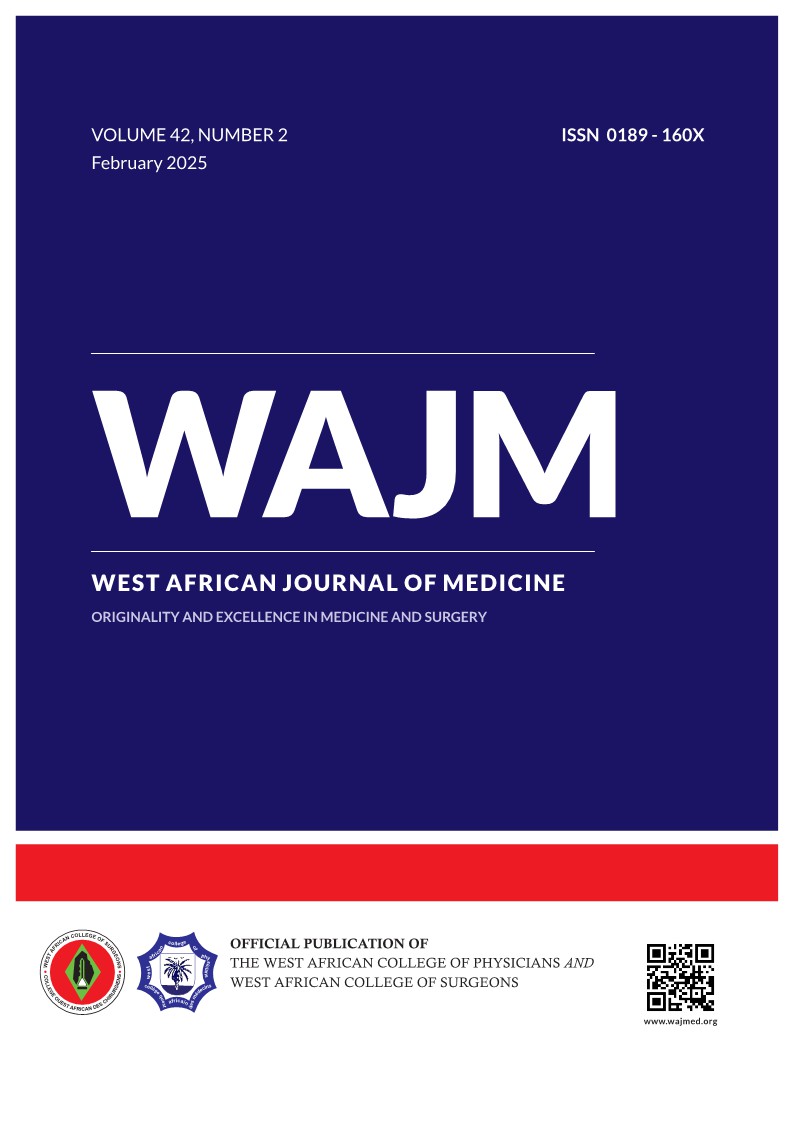ORIGINAL ARTICLE: Predictors of Erectile Dysfunction among Nigerian Men with Type 2 Diabetes Mellitus
West Afr J Med February 2025; 42 (2):83-89 PMID: 40618378
Keywords:
Erectile dysfunction, Predictors, Type 2 diabetesAbstract
Introduction and objectives: Erectile dysfunction (ED) is common among men over 40years and prevalence increases with age. ED occurs at an earlier age in the diabetic population and strongly associated with serum testosterone, age, hypertension and obesity. The aim of this study was to determine the predictors of ED among type 2 diabetic Nigerian men.
Materials and methods: A cross-sectional hospital-based study done among patients with ED and diabetes. ED was assessed using International Index of Erectile Function (IIEF) 5 questionnaire. Age, BMI serum testosterone, glycosylated haemoglobin and fasting lipid profile were measured in each group.
Results: A total of 102 participants were recruited; 51 participants in each study group. Majority, were >55 years in the diabetic and non-diabetic groups respectively (p = 0.456). The BMI and the waist circumference of the two groups showed statistically significant difference (0.006 and 0.007 respectively). The weight, hip circumference and waist/hip ratio of the two groups showed no statistical significance. The median value of serum testosterone for the non-diabetic group (622.2ng/ml) was significantly higher than the diabetic group (288ng/ml) (p=0.001). Multivariate logistic regression analysis showed increased risk of ED in diabetic patients aged > 60years ( OR 4.9), serum testosterone <270ng/ml (OR 3.8), hypertension (OR 2.93), fasting blood glucose (FBS) >125mg/dl (OR 2.6), low density lipoprotein (LDL) > 160mg/dl (OR 6.3) and triglyceride >150mg/dl (OR 2.9).
Conclusion: The study showed that age, serum testosterone, hypertension, elevated FBS and dyslipidaemia are independent predictors of ED among type 2 diabetic men.


